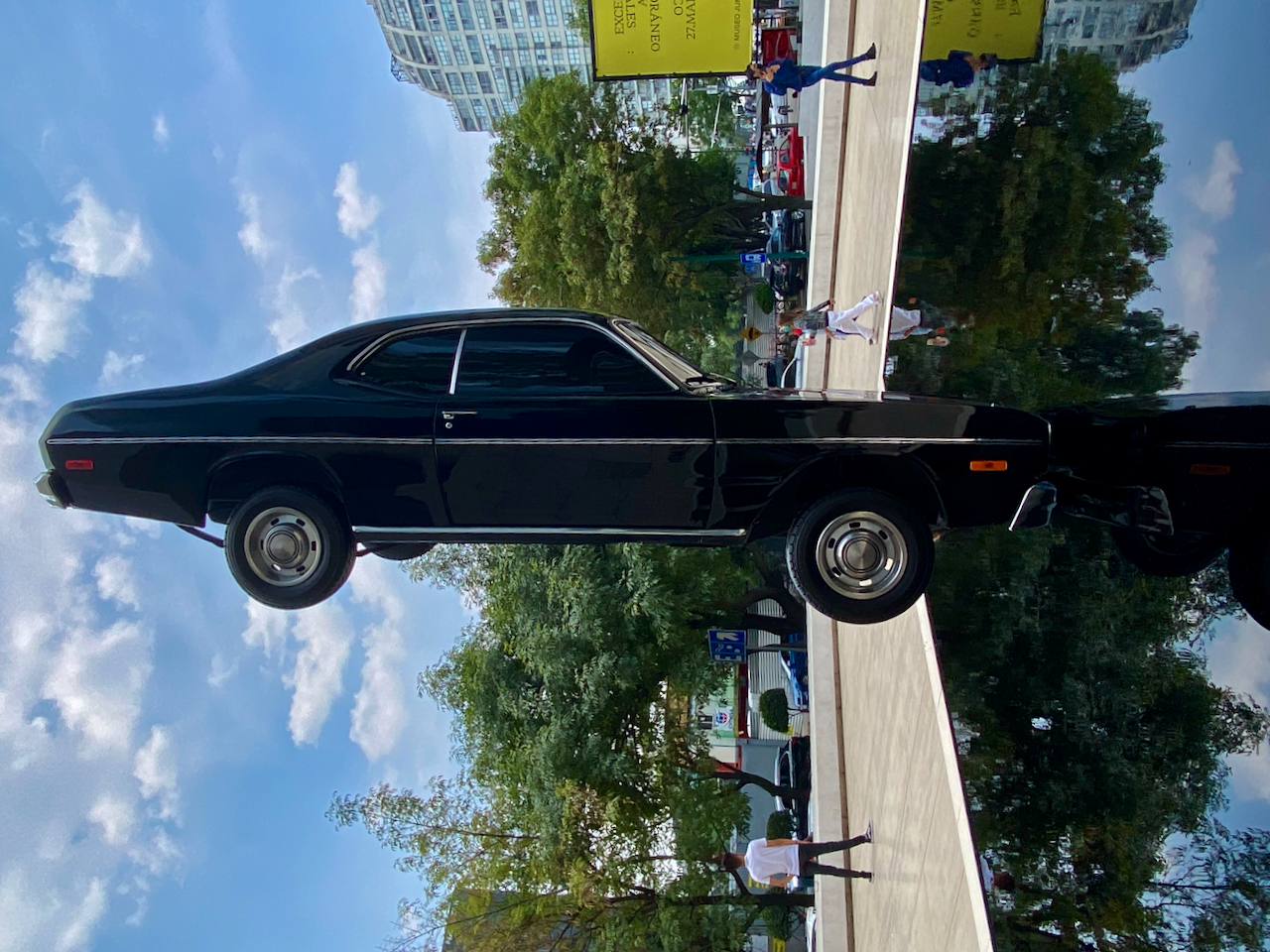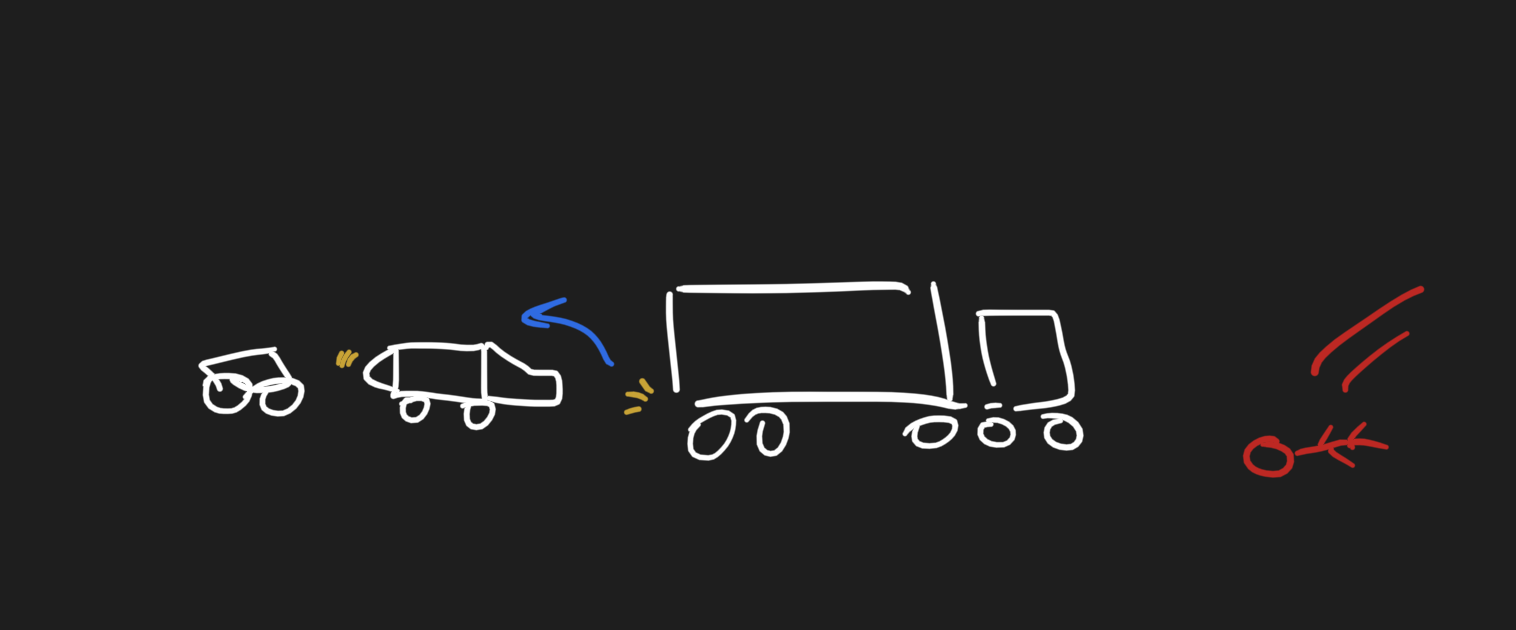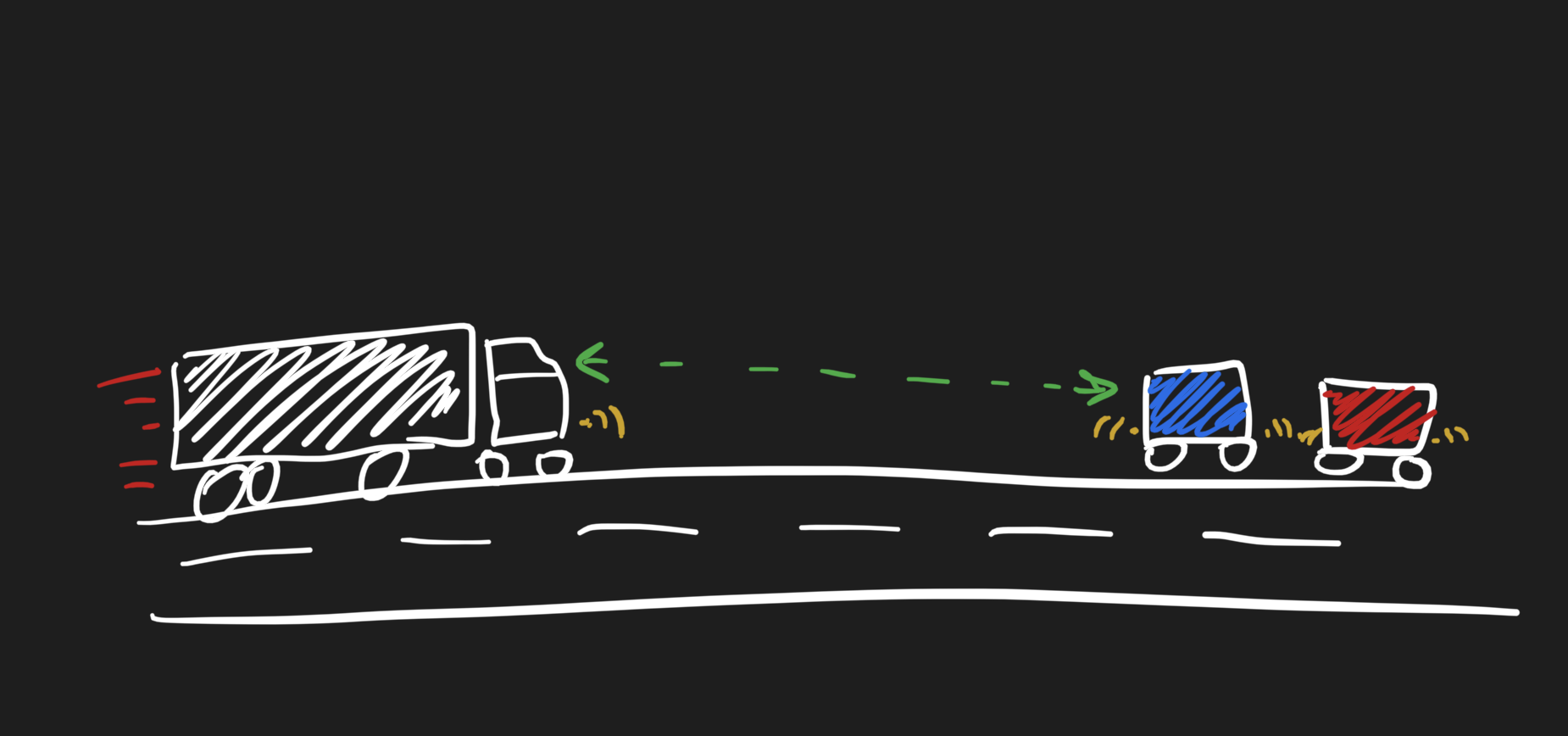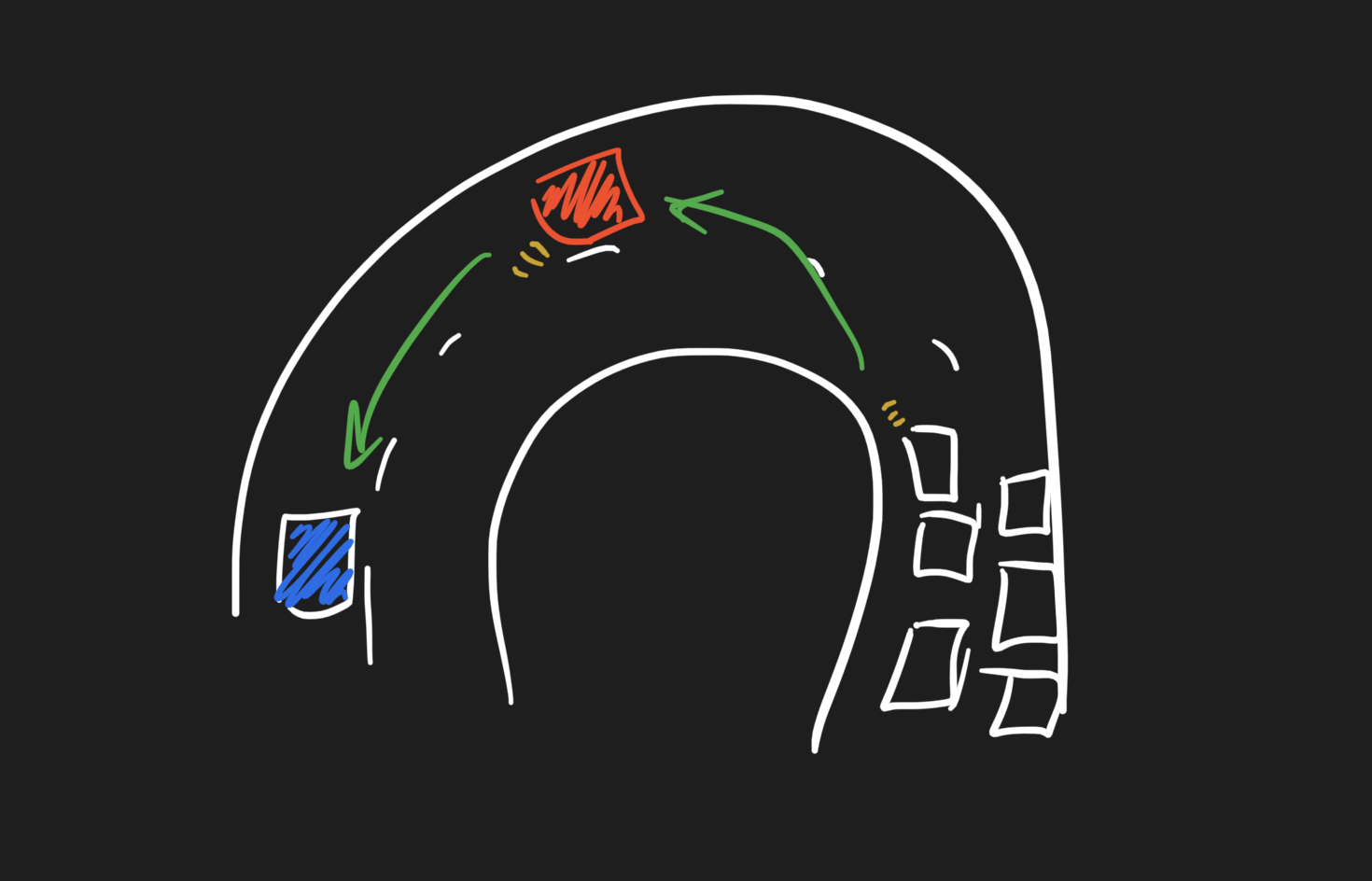hazard indicators in Mexico

Post three of my 100-post challenge. An attempt at putting my driving experiences into writing. As the set of driving experiences in a different country is massive and intimidating to write about, it helped to narrow it down to a singular element: hazard indicators. Also adding some of my own doodles to the post.
One interesting element of driving in Mexico is the use of hazards indicators while driving. In the U.S. I would only seem them on a car stopped on the roadside, or the rare occasion someone was driving slowly in the right lane.
Here it’s a universal “pay attention; pass it on” message. Traffic up ahead slowing down unexpectedly? Hazards, as you brake. Notice a car stalled on the roadside up ahead? Hazards. Big pothole, lane-shifting, construction workers, people selling snacks in the middle of the road; all valid reasons for activating them.
From an information-communication perspective they are exceptional at allowing the danger-signifying message to travel faster, further, and more reliably than line-of-sight – particularly so if you don’t have line-of-sight visibility to the actual danger up ahead. This comes in especially useful with especially curvy and unpredictable roads or in zero-visibility weather conditions.
It also makes danger more explicit than simply inferring the situation from the fact cars up ahead are slowing down. Car brake lights activate for all sorts of reasons, but hazards are activated for a much smaller, more explicit set of reasons. It’s harder to mis-activate them as the button takes a deliberate action to press. They can also be switched on by the person sitting in the passenger seat – further increasing the odds of safely navigating with the surrounding traffic if the driver is occupied with avoiding death at that moment.
they allow a signal to travel around larger vehicles #

When you’re a car behind a larger vehicle, it’s difficult to see what’s happening up ahead and you’re pretty much at the mercy of matching the speed of the vehicle ahead. When the truck ahead of you activates their blinkers as they start slowing down, it means there’s probably traffic up ahead and you can expect to come to a full stop.
hazard signals travel forwards as well #

When a car behind me turns on its blinkers, it’s reassuring to know they are still awake and aware of what’s going on ahead of them – and even ahead of me. Especially so when I have to brake suddenly with a giant truck in my rear-view mirror.
One use I’ve noticed in the U.S. is truckers flashing their hazards as a thank-you after letting them merge into your lane. I haven’t seen this to be the case here; I presume this may be related to the fuzzier distinction between making the space for a car and a car making a space for itself.
they can travel around curvas peligrosas (dangerous curves) #

These can actually be pretty sketchy. Sometimes there’s a person waiting to cross in the eighteen inches of space between the wall and your car mirror. Other times it’s standstill traffic right around the corner. Still others it’s a group of animals crossing the road. Seeing blinking indicator lights before even turning the corner gives you awareness not possible with standard-issue eyeballs.
It’s pretty difficult to communicate with other drivers on the road. During the best of times, you can signal with a hand and make eye contact with them; or give them the finger. During a rainstorm in the middle of the night however – the other cars may as well be in a completely different dimension. It’s reassuring to know we still have ways of crossing the space between our high-velocity metal boxes zooming around. Yay, social-communication technology.